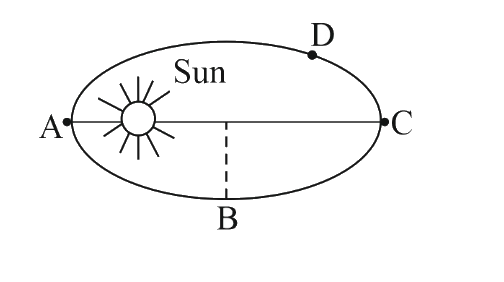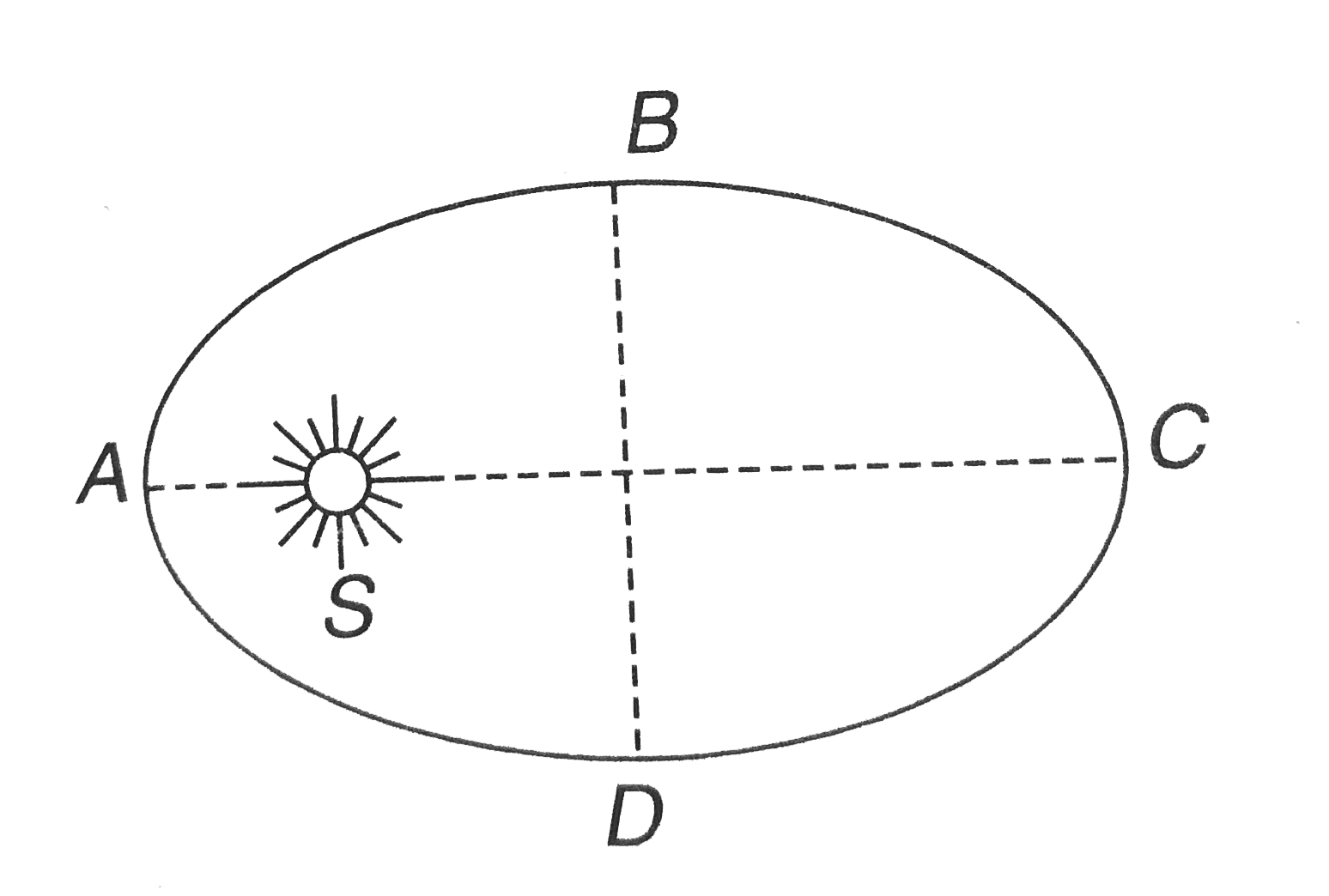A planet is revolving around the Sun in an elliptical orbit. Its closest distance from the Sun is r and farthest distance is R. If the orbital velocity of the planet closest to the Sun is v, then what is the velocity at the farthest point?
vrR
vRr
v√rR
v√Rr
The correct Answer is:A
To find the velocity of the planet at its farthest point from the Sun in its elliptical orbit, we can use the principle of conservation of angular momentum. Here’s a step-by-step solution:
Step 1: Understand the problem
We have a planet revolving around the Sun in an elliptical orbit. The closest distance from the Sun is denoted as r, and the farthest distance is R. The velocity of the planet at the closest point is v, and we need to find the velocity at the farthest point, which we will denote as V.
Step 2: Use the conservation of angular momentum
In an elliptical orbit, the angular momentum of the planet remains constant. The angular momentum (L) at any point in the orbit can be expressed as:
\( L = m \cdot v \cdot r \)
at the closest point, and
\( L = m \cdot V \cdot R \)
at the farthest point, where:
- \( m \) is the mass of the planet,
- \( v \) is the velocity at the closest point,
- \( r \) is the distance from the Sun at the closest point,
- \( V \) is the velocity at the farthest point,
- \( R \) is the distance from the Sun at the farthest point.
Step 3: Set the angular momentum equations equal
Since angular momentum is conserved, we can set the two expressions for angular momentum equal to each other:
\( m \cdot v \cdot r = m \cdot V \cdot R \)
Step 4: Simplify the equation
We can cancel the mass \( m \) from both sides of the equation:
\( v \cdot r = V \cdot R \)
Step 5: Solve for the velocity at the farthest point
Now, we can solve for \( V \):
\( V = \frac{v \cdot r}{R} \)
Final Result
Thus, the velocity of the planet at the farthest point from the Sun is:
\( V = \frac{v \cdot r}{R} \)
---
We have a planet revolving around the Sun in an elliptical orbit. The closest distance from the Sun is denoted as r, and the farthest distance is R. The velocity of the planet at the closest point is v, and we need to find the velocity at the farthest point, which we will denote as V.
In an elliptical orbit, the angular momentum of the planet remains constant. The angular momentum (L) at any point in the orbit can be expressed as:
\( L = m \cdot v \cdot r \)
at the closest point, and
\( L = m \cdot V \cdot R \)
at the farthest point, where:
- \( m \) is the mass of the planet,
- \( v \) is the velocity at the closest point,
- \( r \) is the distance from the Sun at the closest point,
- \( V \) is the velocity at the farthest point,
- \( R \) is the distance from the Sun at the farthest point.
Since angular momentum is conserved, we can set the two expressions for angular momentum equal to each other:
\( m \cdot v \cdot r = m \cdot V \cdot R \)
We can cancel the mass \( m \) from both sides of the equation:
\( v \cdot r = V \cdot R \)
Now, we can solve for \( V \):
\( V = \frac{v \cdot r}{R} \)
Thus, the velocity of the planet at the farthest point from the Sun is:
\( V = \frac{v \cdot r}{R} \)
Topper's Solved these Questions
- GRAVITATIONBOOK - CENGAGE PHYSICSCHAPTER - GRAVITATIONEXERCISE - Multiple Correct
24 Videos
- GRAVITATIONBOOK - CENGAGE PHYSICSCHAPTER - GRAVITATIONEXERCISE - Assertion- Reasoning
13 Videos
- GRAVITATIONBOOK - CENGAGE PHYSICSCHAPTER - GRAVITATIONEXERCISE - Subjective
15 Videos
- FLUID MECHANICSBOOK - CENGAGE PHYSICSCHAPTER - FLUID MECHANICSEXERCISE - INTEGER_TYPE
1 Videos
- KINEMATICS-1BOOK - CENGAGE PHYSICSCHAPTER - KINEMATICS-1EXERCISE - Integer
9 Videos
Similar Questions
Knowledge Check
A planet is revolving around the Sun in an elliptical orbit. Its closest distance from the sun is rmin. The farthest distance from the sun is rmax if the orbital angular velocity of the planet when it is nearest to the Sun ω then the orbital angular velocity at the point when it i at the farthest distanec from the sun is
A(√rminrmax)ωB(√rmaxrmin)ωC(rmaxrmin)2ωD(rminrmax)2ωA planet is revolving in an elliptical orbit around the sun. Its closest distance from the sun is r and the farthest distance is R. If the velocity of the planet nearest to the sun be v and that farthest away from the sun be V. then v/V is
AR2/r2Br2/R2CR/rDr/RWhich planet is closest to Sun?
AEarthBMercuryCMarsDJupiter
A planet is revolving round the sun in an elliptical orbit, If v is the velocity of the planet when its position vector from the sun is r, then areal velocity of the planet is
View SolutionConsider a planet moving in an elliptical orbit around the Sun. The work done on the planet by the gravitational force of the Sun
View SolutionWhich is the closest planet to the Sun
View SolutionFor a planet revolving around Sun in an elliptical orbit, to obtain its velocity at any point we have to apply
View SolutionWhich planet is farthest to Sun ?
View Solution


